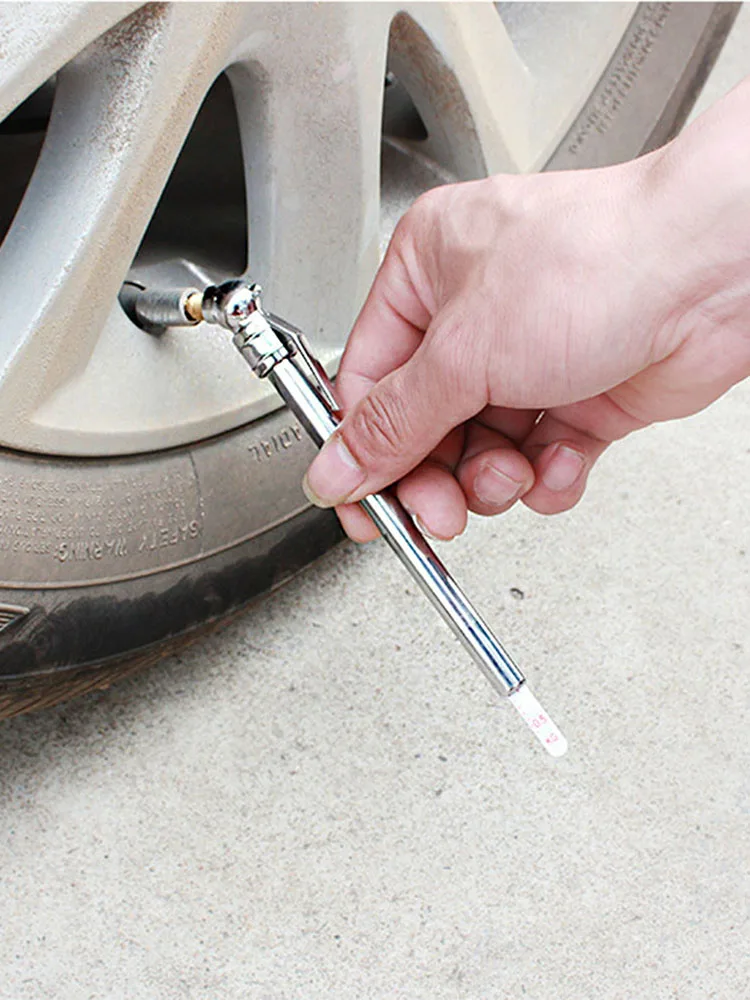Photo: istockphoto.com
Driving is a luxury that many people across the country enjoy, but if proper care isn’t taken to maintain a vehicle, it can result in rapid wear, part failure, and poor control. Tires are one of the features of a car that can sometimes be overlooked, but it’s important to ensure that you know how to use a gauge to check tire pressure. Underinflated tires increase braking distance, reduce steering control, and accelerate tire wear, which can result in complete tire failure. Overinflated tires are not as hazardous, but they can still increase tire wear, affect the wear pattern of the treads, and reduce control. To ensure that your tires are not under- or overinflated, it’s necessary to understand how to use a tire pressure gauge.
Tools & MaterialsIt’s best to check the tire pressure when the tires are cold, such as first thing in the morning or after the vehicle has been parked in the shade for several hours. This helps to increase the accuracy of the readings. In order to test tire pressure, you’ll need to purchase a viable tool such as this tire pressure gauge—a favorite in our researched guide to the best tire pressure gauges.
Advertisement
Learning how to use a low-pressure tire gauge is relatively simple, though you will need to find the manufacturer’s recommended PSI before you can begin. While it may seem like the first thing to do is take out the tire pressure gauge, that wouldn’t get you very far unless you already knew the manufacturer’s recommended PSI for the tires. Given that most people don’t typically memorize this information, it’s a good idea to check and verify before using the tire pressure gauge.
Tire and loading information is commonly included in the owner’s manual, though you may also be able to find it on a sticker on the driver’s side door, near the trunk lid, inside the fuel door, or even inside the console. Look for a two-digit number, like 35, followed by PSI, which means pounds per square inch.
Related: The Best Jump Starters With Air Compressors for Your Car
Photo: istockphoto.com
STEP 2: Locate the tire valve and remove the cap.Each tire has a valve used to inflate or deflate it, depending on the suggested PSI and the current tire pressure. The tire valve is typically a small, black tube about an inch long with a threaded cap. It can commonly be found on the inside of the rubber wheel, protruding through a gap in the hubcap. Locate this valve, then remove the threaded cap so that the tire pressure gauge can fit over the top of the valve. Make sure to keep track of the tire valve cap because it’s very small and easy to lose.
STEP 3: Press the gauge onto the tire valve.The next step to learning how to use a tire pressure gauge is to simply press the gauge down onto the tire valve after the threaded cap has been removed. Each tire valve contains a spring-loaded valve core that automatically seals itself using air pressure from inside the tire. By pressing the gauge against the valve core, the gauge opens the valve to the internal air pressure of the tire and allows the gauge to act as the seal while simultaneously measuring the tire’s PSI rating.
By pressing the gauge against the valve core, the gauge opens the valve to the internal air pressure of the tire and allows the gauge to act as the seal while simultaneously measuring the tire’s PSI rating.
Advertisement
STEP 4: Check the reading on the tire pressure gauge.The tire pressure gauge should be held firmly against the open tire valve so that no air is escaping. If the tire pressure gauge is making a hissing sound, you need to adjust the angle of the gauge inside the tire valve until it is silent. This indicates that the tire pressure gauge is measuring the full tire pressure instead of getting a partial reading due to escaping air. To check the reading on the tire pressure gauge, simply read the slide ruler for manual pen gauges, the dial for dial pressure gauges, or the digital screen for digital pressure gauges. The ruler, dial, or screen should display the current tire pressure in PSI.
Photo: istockphoto.com
After taking the tire pressure measurement, write down the current pressure for each tire so that you don’t forget and need to check again. If the pressure within each tire is too high, you can easily drain some air by holding the tire pressure gauge against the tire valve at an angle, listening for the hiss of escaping air. Periodically check the tire pressure to ensure that you don’t drain too much air and stop once you reach the desired PSI.
If the pressure within each tire is too high, you can easily drain some air by holding the tire pressure gauge against the tire valve at an angle, listening for the hiss of escaping air. Periodically check the tire pressure to ensure that you don’t drain too much air and stop once you reach the desired PSI.
If the pressure within the tire is too low, connect an air compressor such as this portable inflator—a favorite in our researched guide to the best tire inflators—to the tire valve to inflate it. After inflating the tire, use the tire pressure gauge to check the PSI and make sure it is now at the correct level according to the manufacturer’s recommendations.
It’s advised to check the tire pressure on your vehicle at least once per month to ensure that you are safe while driving and not doing any unexpected damage to your tires.
Advertisement
RELATED: I Tried a Cordless Tire Inflator―Did It Work?
Final ThoughtsEffectively using a tire pressure gauge is a necessary skill for a driver to have in order to be certain that their vehicle is properly maintained. Additionally, by checking the tire pressure of the vehicle, drivers can ensure that they are getting the most out of each tire, instead of accidentally causing premature wear and tear due to overinflated or underinflated tires. Also, keep in mind that you can deflate a car tire with only a tire pressure gauge, but to fill the tire you will need access to an air compressor and a suitable attachment for filling tires. Consider investing in a home air compressor or find a local gas station that has one available for use.
Additionally, by checking the tire pressure of the vehicle, drivers can ensure that they are getting the most out of each tire, instead of accidentally causing premature wear and tear due to overinflated or underinflated tires. Also, keep in mind that you can deflate a car tire with only a tire pressure gauge, but to fill the tire you will need access to an air compressor and a suitable attachment for filling tires. Consider investing in a home air compressor or find a local gas station that has one available for use.
Advertisement
Maintaining proper tire inflation is relatively simple and essential to the overall tire performance of your vehicle. A properly inflated tire will provide longer life, quicker steering response, better fuel efficiency and a smoother ride than an improperly inflated tire. Both underinflation and overinflation can cause headaches like premature treadwear and possible tire failure. The best way to ensure you're getting the most out of your tires is to check your tire pressure on a monthly basis.
Knowing how to use a tire pressure gauge is very simple. Here’s how to check tire pressure and refill your tires.
Items You Need When Checking Tire Pressure
Tire pressure gauge
Air compressor
Pen and paper
Your tire pressure gauge can be digital or standard. Auto parts stores typically carry both. Many auto parts stores sell portable air compressors that run from your car battery or 12v power port. Alternatively, you can use the air compressor found at most gas stations. They usually cost $0.50 or $1.00 to use.
Vehicle manufacturers specify PSI – literally “pounds per square inch” of pressure – assuming tires are cold. Tires are considered cold when the vehicle has been parked for three hours or more, or if the vehicle has been driven less than a mile (1.6 km) at moderate speed. PSI is the unit your pressure gauge uses to provide readings.
Look on the driver’s side door jamb or your owner’s manual to find the recommended cold tire PSI for your front and rear tires. If you cannot find it, you should consult your vehicle dealer, manufacturer, or a qualified tire professional.
If you cannot find it, you should consult your vehicle dealer, manufacturer, or a qualified tire professional.
If your front and rear tires require different pressure levels, write down the correct PSI for each to avoid getting confused as you move around your vehicle checking tire pressure.
Remove the valve cap from one of your tires. Then place the pressure gauge on the valve stem and press down hard enough so the hiss sound disappears and your gauge provides a reading. With a standard gauge, the air pressure will push a small bar out from the bottom of the gauge. Measurement units are etched into the bar. A digital gauge will show you the reading on a screen.
Write down the reading and repeat this process for all four tires.
Use an air compressor to refill any tires with low pressure. Many air compressors are different, so read directions carefully to be sure you’re using it correctly.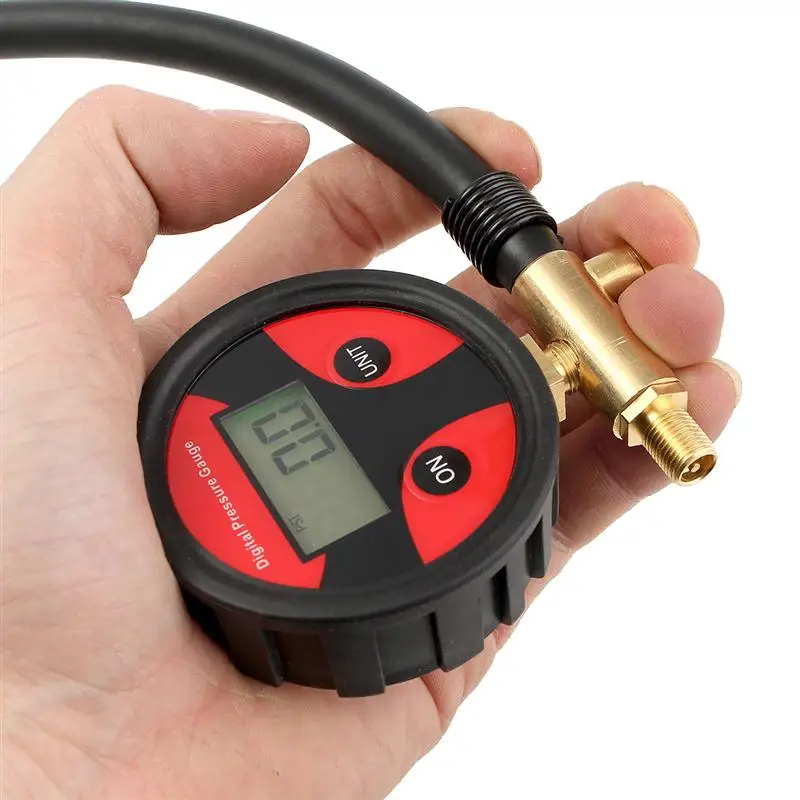
If you’re using the air compressor at a gas station, be sure to park so that the hose will reach all four tires. Insert change into the machine until you hear the motor running. Fill each tire by placing the end of the hose over the valve stem and pressing on the lever.
Using a gas station air compressor means your tires might be “hot.” If it is necessary to adjust inflation pressure when tires are “hot”, set their pressure to 4 psi (14 kPa) above the recommended cold inflation pressure. Recheck the inflation pressure when the tires are cold.
After filling your tires, use the gauge to check pressure again. At this point, it’s ok if you overfilled the tires because you can always let some air back out. Never drive on overinflated tires. Overinflation can result in decreased traction, premature wear, and decreased impact absorption.
Make the above procedure a monthly ritual. Regularly checking your tire pressure is the best way to ensure your tires never dip far below the optimal PSI.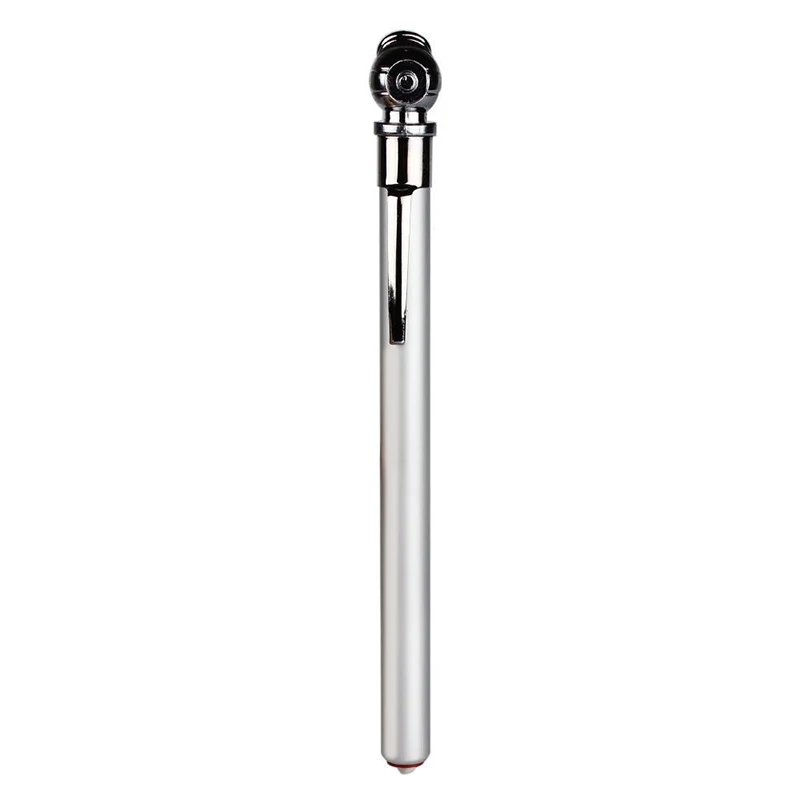
Accuracy matters and you should keep that in mind when choosing a gauge. For just a few dollars, you can find a quality, accurate tire pressure gauge that gives accurate readings. If you’re not sure which one to purchase, ask a professional technician which he or she prefers.
A digital tire pressure gauge will provide accurate readings, but don’t forget that it operates on a battery. If you think having to replace the battery will prevent you from using it, it’s best to go with a standard gauge.
It’s best to use your personal tire gauge versus those available attached to air hoses at service stations. Of all the pressure gauges out there, they’re the most likely to be weathered, and possibly inaccurate.
There’s never a good time for a flat. That’s why Bridgestone DriveGuard tires are masterfully engineered to keep you moving for up to 50 miles at speeds up to 50 MPH without disruption.
There’s never a good time for a flat.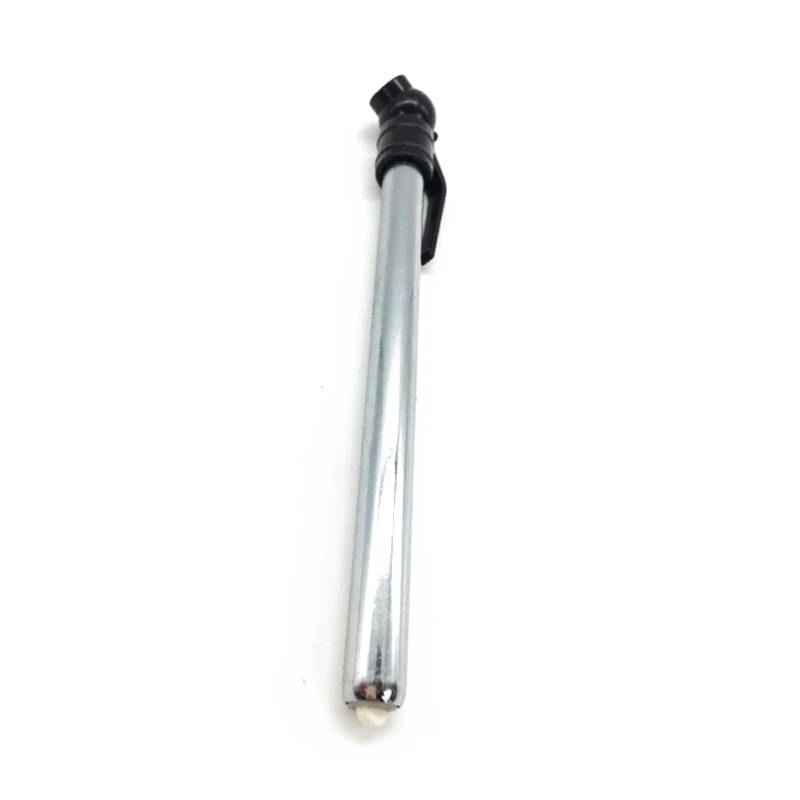 That’s why Bridgestone DriveGuard tires are masterfully engineered to keep you moving for up to 50 miles at speeds up to 50 MPH without disruption.
That’s why Bridgestone DriveGuard tires are masterfully engineered to keep you moving for up to 50 miles at speeds up to 50 MPH without disruption.
See Details Find Your Fit
Content:
 Assess the compliance of the disks and the methods of their fastening with the vehicle structure. If it is necessary to provide access to the wheel fastening elements, dismantle the decorative protective caps of the discs. When installing disks on a vehicle that are not provided for by the manufacturer's documentation, make sure that the outer edge of the disk does not protrude beyond the dimensions of the vehicle, and that the inner edge of the disk does not touch the elements of the brake system, steering and suspension at maximum angles of rotation of the steered wheels. Visually check that the wheels are secure and that all fasteners are present. Inspect wheel rims and rims for damage, cracks, and improper installation of locking rings.
Assess the compliance of the disks and the methods of their fastening with the vehicle structure. If it is necessary to provide access to the wheel fastening elements, dismantle the decorative protective caps of the discs. When installing disks on a vehicle that are not provided for by the manufacturer's documentation, make sure that the outer edge of the disk does not protrude beyond the dimensions of the vehicle, and that the inner edge of the disk does not touch the elements of the brake system, steering and suspension at maximum angles of rotation of the steered wheels. Visually check that the wheels are secure and that all fasteners are present. Inspect wheel rims and rims for damage, cracks, and improper installation of locking rings. 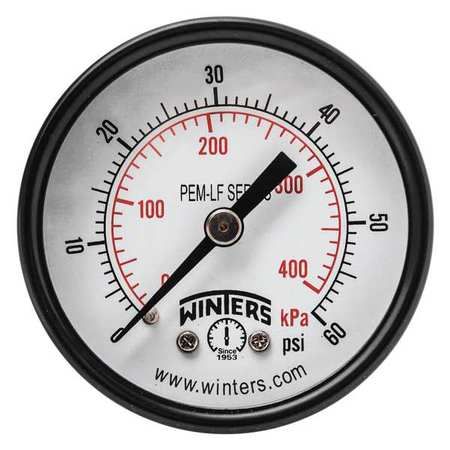 When installing tires that are not provided for by the documentation, make sure that the sidewalls of the tires located on the outside do not protrude beyond the dimensions of the vehicle, that there is no contact between the parts of the tires located on the inside, elements of the brake system, steering and suspension at maximum angles of rotation of the steered wheels , as well as touching the treadmills of tires with body elements, chassis and plumage at maximum suspension travels up. Check for tire damage that exposes cords or tread peeling. If the vehicle has studded tires, check the presence of such tires on all axles and on the spare wheel, as well as the installation of the identification sign "Spikes".
When installing tires that are not provided for by the documentation, make sure that the sidewalls of the tires located on the outside do not protrude beyond the dimensions of the vehicle, that there is no contact between the parts of the tires located on the inside, elements of the brake system, steering and suspension at maximum angles of rotation of the steered wheels , as well as touching the treadmills of tires with body elements, chassis and plumage at maximum suspension travels up. Check for tire damage that exposes cords or tread peeling. If the vehicle has studded tires, check the presence of such tires on all axles and on the spare wheel, as well as the installation of the identification sign "Spikes". 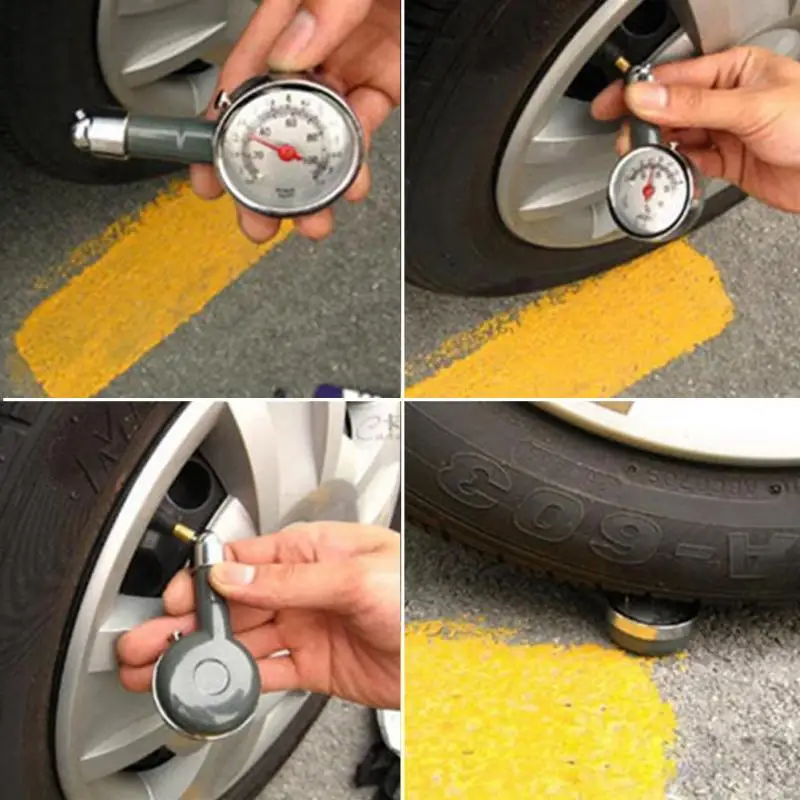 The value of the measured pressure in the tire must not exceed the maximum allowable indicated on the tire, and must comply with the standard values specified in the vehicle's operational documentation.
The value of the measured pressure in the tire must not exceed the maximum allowable indicated on the tire, and must comply with the standard values specified in the vehicle's operational documentation.
Zone width b2 is greater than or equal to 0.5b1.
The remaining tread height shall not be measured at the location of the steps at the base of the tread pattern elements and half-bridges in the groove intersection area.
For tires with a solid rib in the center of the tread, the tread height is measured along the edges of this rib, for off-road tires - between the lugs in the center or in places the least distant from the center of the tread, but not along the ledges at the base of the lugs and not on half bridges.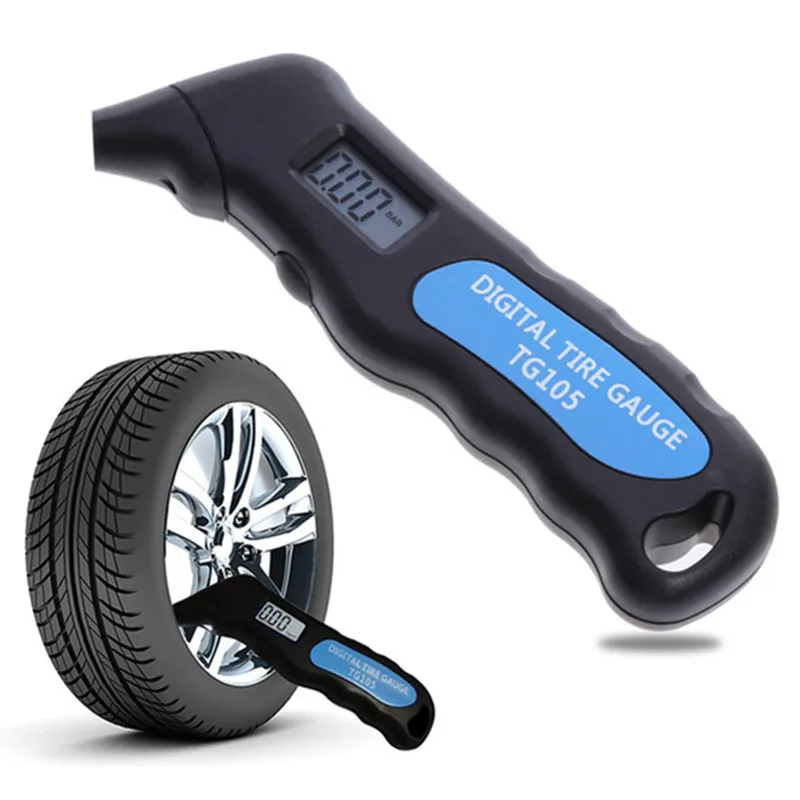
The remaining tread height can be measured with a depth gauge, which is equipped with a vernier caliper, as well as a special template - a tread depth gauge.
On tires with wear indicators, the maximum allowable tread height is determined by the appearance of the wear indicators.
The wear indicator is a design element of the tread of a tire that indicates the limit state of its tread for tread wear. Wear indicators are usually located in the transverse plane of the treadmill in six radial sections. The locations of the indicators are indicated on the sidewall with various icons, mainly the abbreviation TWI (Tread Wear Indicator).
Gazelle tire pressure table. Tire pressure gas 32213
The pressure level has a significant impact on driving safety. For example, with reduced pressure, the level of elasticity of tires decreases, which in turn can lead to scrolling of rubber on the road, and this can lead to an accident. At the same time, too much pressure is harmful for an overloaded car. It is worth noting that the pressure will be different for the axles of the car.
At the same time, too much pressure is harmful for an overloaded car. It is worth noting that the pressure will be different for the axles of the car.
Each tire and car uses its own pressure standards, which are developed by the manufacturer and are applied not only to the tire itself, but also to individual parts of the car, for example, the gas tank cap. Such information indicates not only the level of pressure, but also the dimension of the tires with the load index.
It is worth noting that the data applied to the tires are the maximum allowable, so the values of more than three units present on the wheels of the Daimler concern are not optimal, but limiting. On average, the pressure level in the wheels should be about 2.5 atmospheres or slightly less. Such an indicator ensures not only driving safety on the roads, but also a reduction in fuel consumption.
If the pressure is in the range of 2.5-3 atmospheres, we can guarantee that wear is increased by 20%.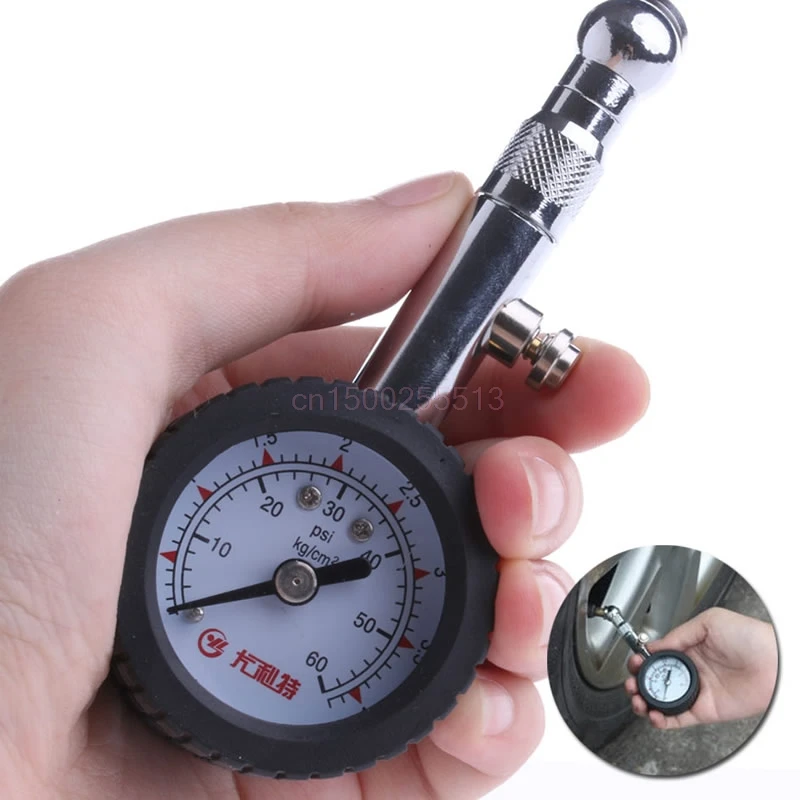 As for 4 atmospheres or more, such a level of pressure can not only significantly increase the fuel consumption of a car, but also lead to a tire explosion in motion, especially at high speeds.
As for 4 atmospheres or more, such a level of pressure can not only significantly increase the fuel consumption of a car, but also lead to a tire explosion in motion, especially at high speeds.
Why monitor tire pressure is explained in the video:
A feature of tires is that after a long period of operation with incorrect pressure, tires remain prone to explosion even when the pressure level is normal.
What tire pressure should be in the tire pressure chart
Always check the pressure when the tires are cold: the tires heat up during driving and the pressure in them increases. If you measure the pressure immediately after the trip, the result will be distorted.
The following are recommendations for checking tire pressure.
1. Check tire pressure regularly every 3-4 weeks.
2. A pressure drop of approximately 1.5% per month is normal for a branded tire. If this value is greater, have the tire checked by a workshop.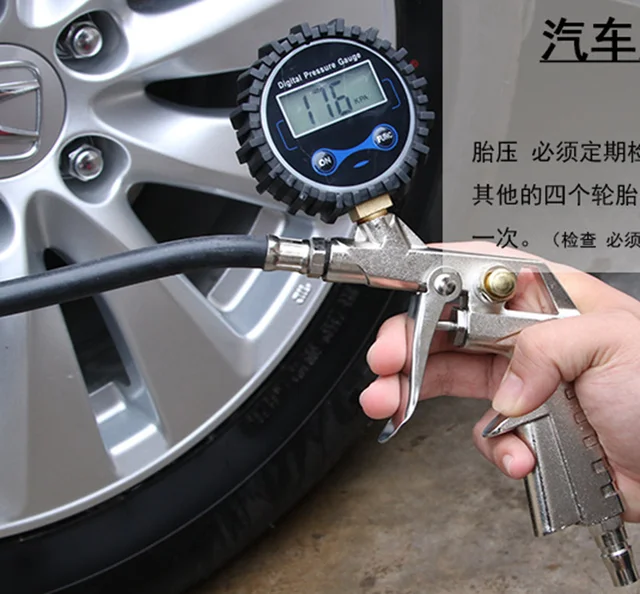
3. Filling valves should always be closed with caps, as if dirt enters the valve, the valve may jam and it will not close tightly.
| Fig. 7.27. For Mercedes E-Class, the prescribed tire pressures are indicated on a sticker on the back of the fuel filler flap |
| Fig. 7.28. Tire wear as a result of long-term operation with insufficient pressure in it |
4. The pressure in the tires must not fall below the set values indicated in the table on the back of the gas tank flap (
Fig. 7.27), as this leads to a characteristic increased tire wear (
Fig. 7.28).
| Fig. 7.29. Tire wear due to long-term use with high air pressure in the tire or frequent trips at maximum speed |
5. A pressure of 0.2-0.3 bar above the norm has some advantages: steering becomes more sensitive, tires wear more slowly (
fig. 7.29), and even slightly reduced fuel consumption. Disadvantage: The damping properties of tires are reduced.
| Fig. 7.30. The contact patch of the tire with the road: A - at normal pressure, the entire working surface of the tire is in contact with the road surface; B - at increased pressure, the tire is in contact with the road only in the middle part of its working surface; C - at low pressure, the contact patch falls on the edges of the tire |
| Fig. 7.31. Wheel shift diagram |
| TECHNICAL DICTIONARY Tire The tire pressure determines the shape and size of the contact patch of the tire with the road surface ( |
PRACTICAL ADVICE
Proper wheel rotation
1. If you have a new spare wheel in the trunk, you can save
It is only important that tires with the same tread pattern from the same manufacturer are on sale. Then you can buy another tire, and the “shoes” for one axle are provided.
2
The purchase of new tires can be delayed by rearranging the wheels in the following way: rear and front on the same side (not diagonally!) and in the same direction of rotation (
fig. 7.31
). In this case, more uniform wear occurs.
3. The disadvantage of this method is that when worn, you have to replace all four tires at once. In addition, due to the repositioning at certain mileage intervals, it is more difficult to recognize possible violations in the suspension, steering or shock absorbers by the nature of wear.
4. When replacing, always make sure that tires of the same manufacturer, with the same profile and service life, are installed on the same axle.
5. Another swapping option takes into account that the tires on the front wheels wear out faster. When they reach the minimum allowable tread height of 1.6 mm, the tires can be moved forward from the rear wheels (with the preservation of the side), if, of course, they are not yet worn to the limit. Thus, you only need two new tires for the rear axle.
6. The basic principle is that tires with less tread wear should be fitted to the rear axle, as this has a decisive effect on the driving stability of the vehicle. If the front tire is damaged on the road, the car still maintains controllability, while the damage to the rear wheel will almost inevitably lead to a skid.
| previous page 8.5.3. Important information about tires | next page 8.5.5. Wheel replacement |
UAZ Hunter Logbook Tire pressure UAZ Hunter
1. Increased wear of the wheel sidewalls, deformation of the tread sole inside.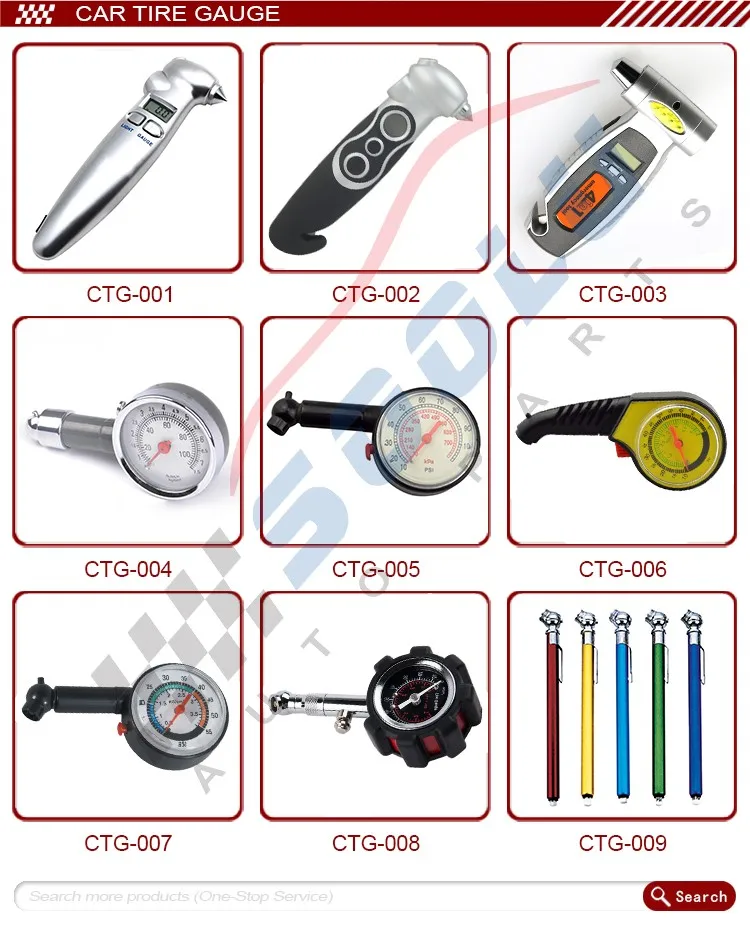
2. Increased fuel consumption due to increased rolling resistance.
3. Increased wear on suspension parts due to increased torsional loads.
4. Increased load on the gearbox and made drives.
5. Deterioration of the car's handling due to the tendency to deformation of the tire (tendency to "steer" the car, "yaw", etc.).
6. Increased braking distance due to reduced traction or loss of vehicle control when braking.
7. Increased risk of nipple damage due to “rotation” of the disc on a low seat tire (for tube tires).
8. Increased risk of "breaking" the wheel with a strong side load, with a corresponding loss of vehicle control.
9. Increased risk of aquaplaning.
1. Increased tread center wear.
2. Increased load on the suspension and body of the car due to increased rebound characteristics of the wheel - the effect of the ball. The ride is not very comfortable due to the fact that the wheel "catches" every pebble or hole.
3. Deterioration of vehicle controllability by reducing the area of contact with the road surface.
4. Increased braking distance and tendency to skid by reducing the contact area with the road surface.
5. Increased risk of puncture or damage, or "explosion" of the wheel.
Draper model
A large number of companies both in our country and abroad are engaged in the development and production of equipment of this class. Most of these developments are presented on the domestic market. Therefore, choosing a specific compressor for tire fitting can be quite difficult.
Among the most popular products are Western European manufacturers. Consider how their products differ from domestic products.
Let's start with a small Draper car compressor manufactured in the UK. It is compact in size, placed in a blue case and has a low price. The power of the device is enough to inflate the wheels of a small car, for example, Matiz.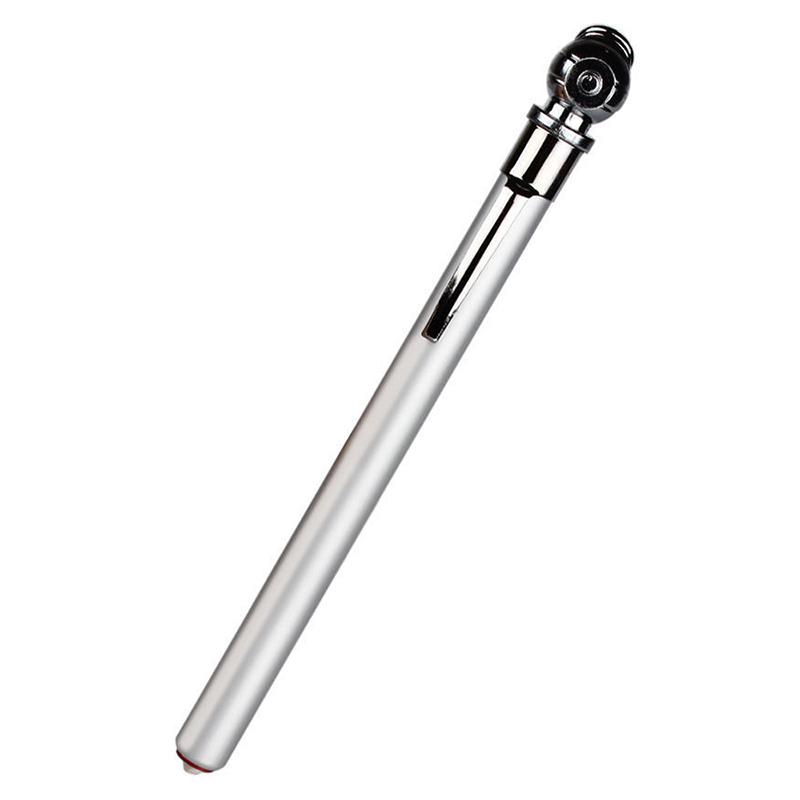 Moreover, despite its miniature size, the compressor for tire fitting can cope with the task within only 20 seconds.
Moreover, despite its miniature size, the compressor for tire fitting can cope with the task within only 20 seconds.
The design of this device is practically the same as the others. All the same fastening of the connecting rod, it is simply mounted on the shaft. This decision made it possible to achieve a reduction in cost, but also added disadvantages to the compressor. It turned out to be less reliable and creates more noise during operation.
But still, the biggest drawback of the unit is the scale on the pressure gauge. It is designed for pressure up to 18 atm, although the device itself is not capable of delivering more than 2 atm. Therefore, achieving a minimum error in the readings will be very problematic.
Model Piece of Mind PM605
From the pros:
The next model is made in Taiwan. It is made in the form of a small suitcase.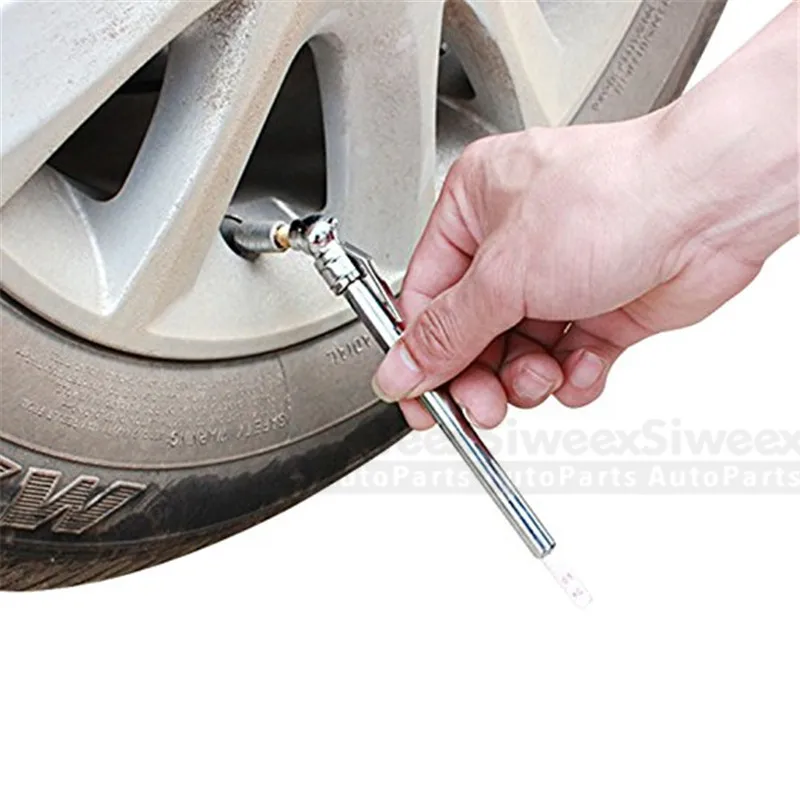 Moreover, for the manufacture of the body used durable plastic, painted black.
Moreover, for the manufacture of the body used durable plastic, painted black.
This approach makes it possible to transport the device in the trunk without fear of losing components and without requiring special packaging.
The Coido 2108 processor is equipped with a manometer, in which there are practically no errors due to the scale up to 7 atm. The increased noise level of the device, due to the presence of plastic legs, is somewhat depressing for users. This material will not spring back, causing the unit to bounce during tire inflation.
Another model made in China is the Piece of Mind PM605 compressor. It is produced under US quality control, has the shape of a parallelepiped and has an impressive size
But if you pay closer attention to the device, you can understand that solidity in dimensions is given by its recess for winding a rather long hose. Another plus is that despite its impressive size it weighs a little and is equipped with a convenient carrying handle
It is equipped with a fan for forced cooling, so it does not overheat during operation.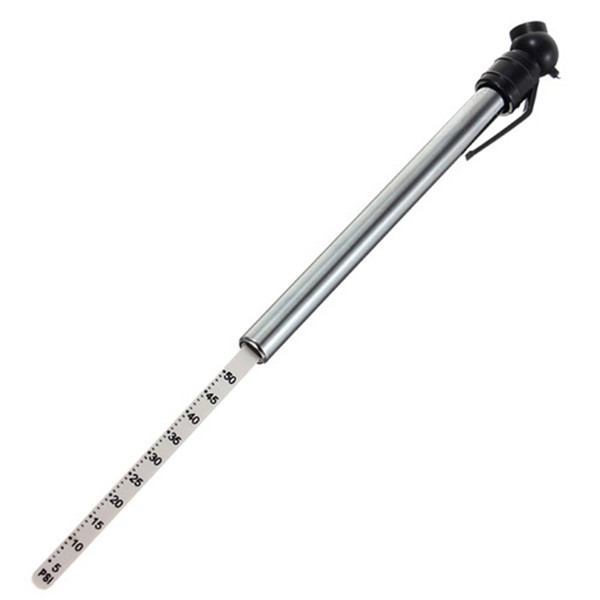 Having a sleeve with a small working volume in the design, it has a greater productivity than similar models. This is ensured by the presence of two sealing rings.
Having a sleeve with a small working volume in the design, it has a greater productivity than similar models. This is ensured by the presence of two sealing rings.
If you purchased a tool that is charged by a car battery, you will need to use it with the engine running. Since when using a powerful compressor, the battery will be discharged very quickly.
Despite the fact that all equipment of this type is equipped with pressure gauges, experts recommend purchasing this measuring device separately. Since built-in devices do not always have the required accuracy. Most compressors come with various nozzles, so they can be used not only for inflating car tires, but also for balls, boats, and pools.
DBP differ in the type of output signal and purpose (applicability).
According to the type of output signal, the devices are divided into two groups:
In the first case, the sensor generates an analog signal (it is taken directly from strain gauges), which is fed to the electronic unit, where it is processed. These are the simplest sensors in design, which are practically not used in new cars, since only certain electronic engine control units are suitable for working with them.
These are the simplest sensors in design, which are practically not used in new cars, since only certain electronic engine control units are suitable for working with them.
Design of an absolute air pressure sensor with an integrated evaluation circuit
In the second case, an evaluation circuit is integrated into the sensor itself, which measures and converts the analog signal from the piezoresistors into digital form - this signal is fed to the electronic unit. This type of DBP is based on special microcircuits that contain both a sensor element and an evaluation circuit. This type of sensor is most often installed on new cars, as it is suitable for most controllers with the appropriate input.
A separate group is the so-called T-MAP-sensors - integrated temperature sensors and DBP. In addition to the MEMS sensor, they contain a temperature sensor based on a conventional thermistor, such a device measures pressure and temperature, which allows you to more accurately determine the amount of air entering the cylinders and make adjustments to the operation of many auxiliary systems (including an intercooler for engines equipped with a turbocharger, and others).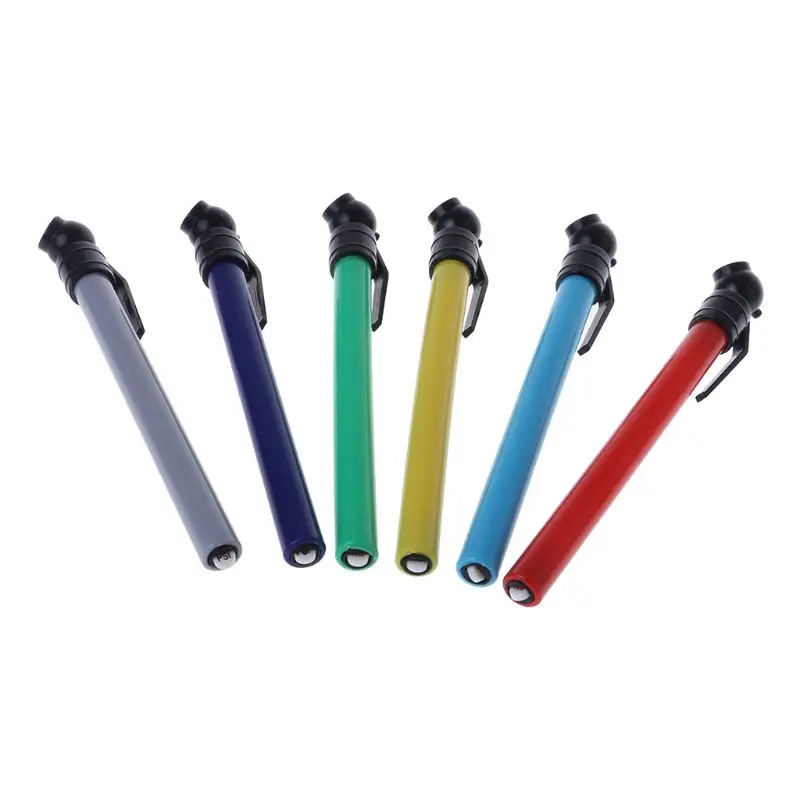
According to the applicability, DBPs are divided into two large groups:
There are also sensors for measuring pressures up to 5-6 atmospheres, they are most often used not in the intake manifold (since such pressure is rare in engines), but in the pneumatic system of cars.
The sensors are also designed for 12 and 24 V supply voltage, and various types of electrical connectors can be used to connect them (usually with knife contacts for individual connectors or group blocks, but there are also options for pin blocks).
JTC 5611
1 230
Good professional pressure gauge, sturdy and reliable. Moreover, the manufacturer clearly strived for universality - the maximum measured pressure here is as much as 11 atmospheres, which is clearly superfluous for an ordinary motorist. It is unlikely that you use KamAZ as a personal transport? But even in the range of ordinary “passenger” pressures, the pressure gauge from JTC is quite convenient, and besides, it retains its compact dimensions. Like any retractable pressure gauge, its length is directly proportional to the pressure, and up to a maximum of 270 mm, its passenger wheel will certainly not “inflate”
It is unlikely that you use KamAZ as a personal transport? But even in the range of ordinary “passenger” pressures, the pressure gauge from JTC is quite convenient, and besides, it retains its compact dimensions. Like any retractable pressure gauge, its length is directly proportional to the pressure, and up to a maximum of 270 mm, its passenger wheel will certainly not “inflate”
Please note that the scale is graduated in 0.2 bar increments, so "odd" pressures will have to be set between divisions. This, perhaps, will be the main disadvantage of the pressure gauge.
Main advantages:
Quality of manufacture accurate tariffing
disadvantages: gross scale
9.5
/10
Rating
Reviews
The manometer occupies a minimum of space and is absolutely unabilled
and bought.
Dial gauge (mechanical). This type of pressure gauge is the most common, it was invented before the rest, it has a fairly simple device and is inexpensive.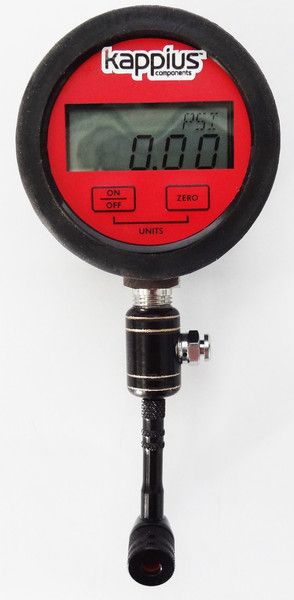 A mechanical pressure gauge consists of: a case, a dial, an arrow, a fitting, as well as a tribco-sector mechanism and a tubular spring or membrane, depending on the model and purpose. The pointer pressure gauge can also be equipped with additional buttons (venting, knocking down the result).
A mechanical pressure gauge consists of: a case, a dial, an arrow, a fitting, as well as a tribco-sector mechanism and a tubular spring or membrane, depending on the model and purpose. The pointer pressure gauge can also be equipped with additional buttons (venting, knocking down the result).
Pros: reasonable price, easy to measure, quite accurate.
Cons: they are afraid of moisture, less accurate than other pressure gauges, to get accurate data you need to take 2-3 measurements, sometimes the dial is difficult to read. It should be noted that the accuracy of mechanical pressure gauges decreases with the approach of the upper limit of the range in which the measurement is made.
Rack gauge. It is not very popular in comparison with the switch counterparts, however, they are still found on sale in the auto industry. The rack-and-pinion manometer is similar to a ballpoint pen, the pressure is measured using a cylindrical spring.
Pros: simple design, reliable, affordable price.
Cons: fragile design, in some cases inconvenient to use.
Electronic pressure gauge. Electronics, as you all know, is gradually replacing everything analog, even the speedometer and then digital already in most modern foreign cars. The electronic pressure gauge is characterized by high accuracy, ease of operation, as well as compact size and soy versatility. In addition, the electronic pressure gauge is equipped with an LCD screen, so its readings will be clear to any modern motorist.
Pros: easy to use, high accuracy, multifunctional.
Cons: high price, temperature-dependent (however, like most of today's electronics), not resistant to shock, the case is most often plastic, so it is rather fragile. The disadvantage is also the dependence of the pressure gauge on the battery charge, firstly, it can be discharged at the most inopportune moment, and secondly, the weaker the charge, the less likely the measurement accuracy.
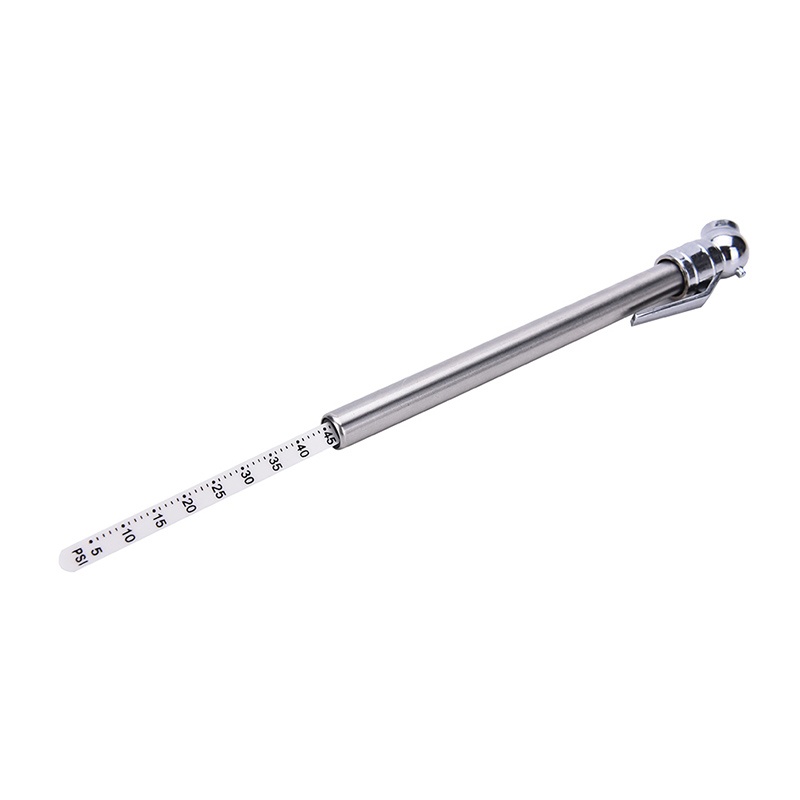 5.
5. In order to understand which class you choose, decide for what purposes you are going to use the device and how important the accuracy of the pressure gauge is to you. Most often used: atmospheres, bar, kg / cm2, less often - kPa and Psi
As a result, by purchasing a tire pressure gauge, you can not only control the pressure, but also improve handling, eliminate excessive fuel consumption, and also achieve an optimal level of comfort in the cabin.
Didn't seem to miss anything!? He also told about what kind of pressure gauges are, why they are needed - also, what is the difference between pressure gauges of different types. Make your choice, and I, perhaps, will finish ... If you have important information or want to supplement the article, I will be happy to listen to you. You can use comments to post your thoughts0003
Thank you all for your attention and see you soon at Question Auto
Drivers should be aware that the pressure is not determined by the tires themselves, but by the operating instructions prescribed by the car manufacturers. Data is not indicated on the surface of tires, since tires can be used for any type of car that has different weights and specifications.
Data is not indicated on the surface of tires, since tires can be used for any type of car that has different weights and specifications.
Tire pressure depends on:
Experienced motorists use special data from manufacturers, the best of which is the car tire pressure chart. The table can be downloaded and printed for your convenience. The specified data will help you quickly and easily calculate the correct pressure for each type of car wheel.
Tire pressure video
What to do when there is no table at hand? If you are on the road and there is no way to find out the exact data, you can use the general tire pressure rule for a car: the pressure in the front tires should be 2.2 atmospheres, on the rear axle 2.0, with a fully loaded car for the rear axle wheels, you need to increase the pressure to 2.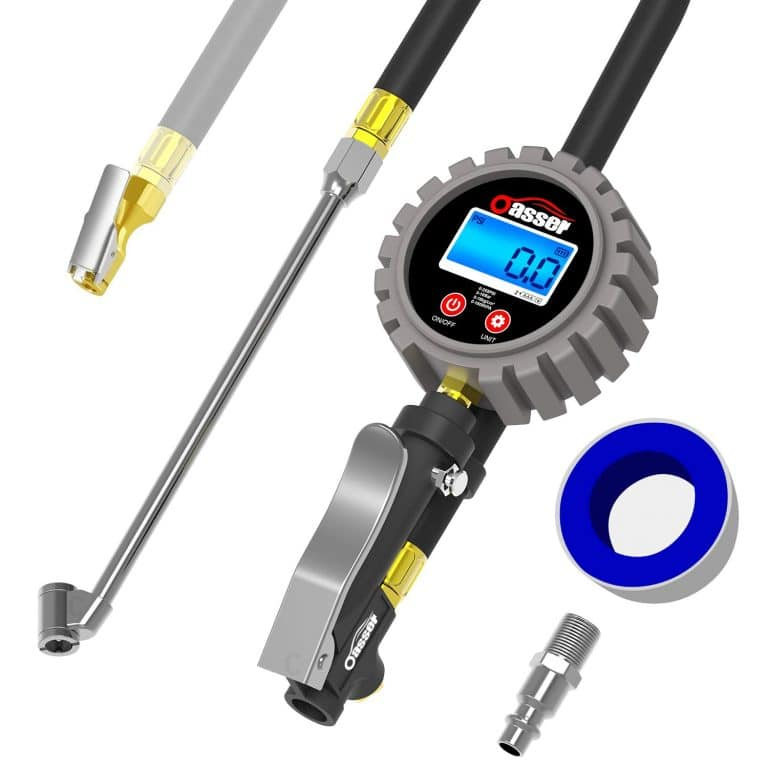 4 atmospheres .
4 atmospheres .
Before deciding which car compressor is better, you need to understand what characteristics it should have
Among them, the most important is the flow rate, which is measured in l/min.
The time required to inflate the wheel depends on it. If you take into account, the pressure in the tires reaches 3 atm. with a size of 14 inches, you will need a pump with a capacity of 40 l / min.
Usually, the model of an air compressor is selected in such a way that this characteristic corresponds to the dimensions of the tires. The way the equipment is connected also depends on its performance. If it does not exceed 40 l / min, then you can use the cigarette lighter as a power source. For larger values, you will need to connect to the battery using special clamps.
However, you can buy a tire compressor with a built-in battery. But this does not mean that the device will be able to work without recharging. And besides, such batteries require connection to a household network.
And besides, such batteries require connection to a household network.
The ability to control the pressure value gives a pressure gauge, which is equipped with modern models of air compressors for the car. It is allowed to use both pointer and digital devices. An important parameter is the accuracy of this device, since a change in pressure even by tenths affects the controllability of the car.
Therefore, when using a pressure gauge, you should know that when reading readings from it, you must take into account the dependence of the error on the location of the arrow. For example, for devices with a scale designed for 20 atm. value equal to 2 atm. located at the very beginning, which will lead to an increased error. Therefore, when choosing a car compressor for tire inflation, they are guided by the specific conditions of its operation.
Watch the video, selection criteria:
The most convenient and accurate are digital models of pressure gauges.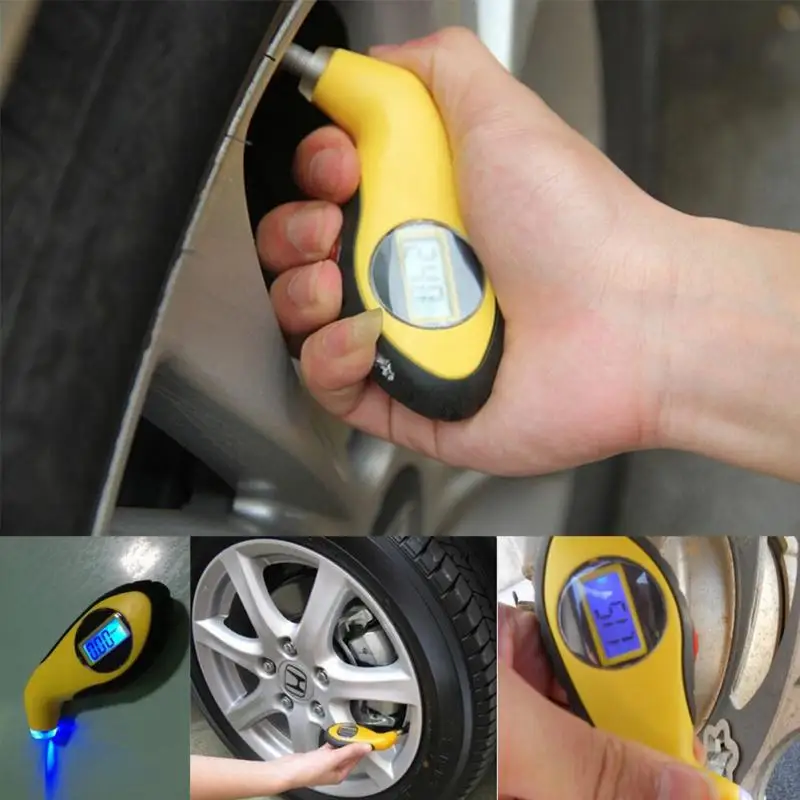 In addition, they can be programmed and the compressor will turn off when the set pressure is reached.
In addition, they can be programmed and the compressor will turn off when the set pressure is reached.
The way the equipment is connected to the wheel is also important. Units are available with two connection options, using:
Naturally, the first method is more convenient. It provides faster connection.
Car owners often get confused in terms of optimal tire pressure, which can vary both on the tires themselves and in the technical documentation for the car. It must be remembered that the front side of the tires does not indicate the optimal pressure, but the maximum permissible values. Therefore, it is necessary to study the technical documentation for your car, and only after that you can go to the store, choose tires, depending on their width and profile height, as well as taking into account the maximum allowable and optimal tire pressure.
The tire pressure is not constant, and it depends on the ambient temperature.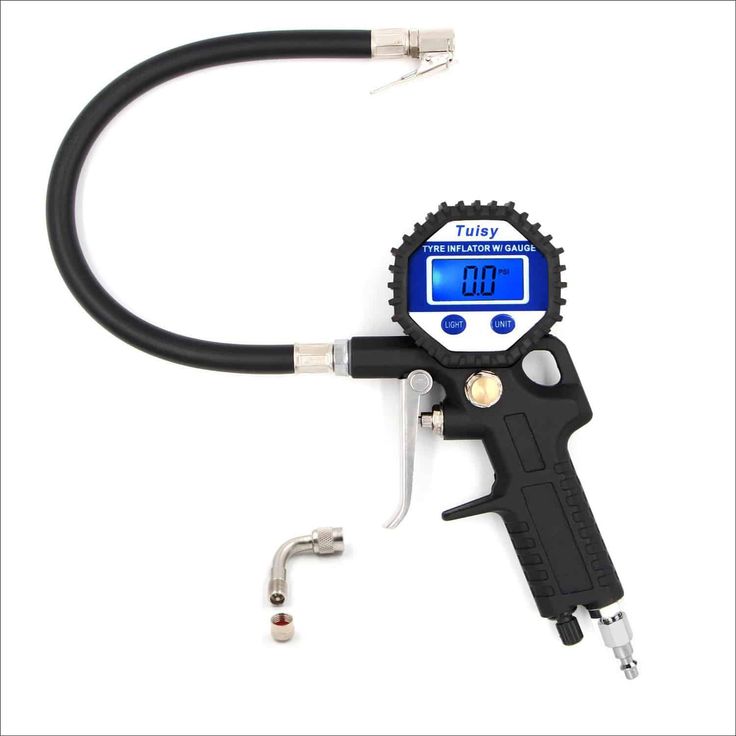 In summer, in the heat, tire pressure may increase, so the car owner will need to bleed air from the nipple, preventing the car from operating on overinflated tires. Similarly, in winter, at low temperatures, it is required to check the pressure with a pressure gauge and slightly pump up the tires. This will maintain an optimal level of tire pressure, prevent tread wear, and the car will not consume a lot of fuel precisely because of incorrect tire pressure readings.
In summer, in the heat, tire pressure may increase, so the car owner will need to bleed air from the nipple, preventing the car from operating on overinflated tires. Similarly, in winter, at low temperatures, it is required to check the pressure with a pressure gauge and slightly pump up the tires. This will maintain an optimal level of tire pressure, prevent tread wear, and the car will not consume a lot of fuel precisely because of incorrect tire pressure readings.
Directly checking the pressure in the wheels is carried out using pressure gauges, which can be mechanical with an arrow and a small graduated scale, or electronic, equipped with a digital screen. The latter have a high cost, so they are not so widespread on the market. Most car owners prefer to use the simplest dial gauges, which combine ease of use, reliability and affordable cost. The only thing to remember when using such devices is their mediocre resistance to mechanical stress. It will be necessary to avoid falls and bumps of the pressure gauge, which will always ensure high-quality and accurate tire pressure data.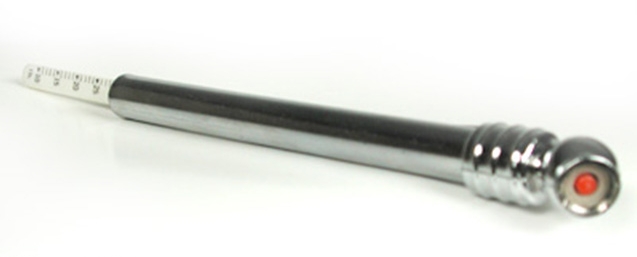
It is best to measure directly in the morning when the tires are still cold, which will allow you to get accurate tire pressure information. But after the trip, it is best to wait at least three to four hours, which will allow the wheels to cool down, guaranteeing the necessary accuracy of measurements. It is necessary to carry out such measurements with a pressure gauge in four wheels. The pressure in them can vary, which is especially dangerous for the handling of a car, which on such tires can have poor road holding, which leads to skidding during high-speed cornering.
The tire pressure indicator and the compliance of this parameter with optimal indicators will directly affect the safety of driving a car. The car owner needs to study the technical documentation for his car, check the tire pressure on a regular basis, which will not only prevent excessive fuel consumption and deterioration in handling, but also eliminate rapid tread wear and problems with the car's suspension. Such control is carried out every two months, all four wheels are checked, and it is better to carry out such work in the morning with a necessarily high-quality proven pressure gauge.
Such control is carried out every two months, all four wheels are checked, and it is better to carry out such work in the morning with a necessarily high-quality proven pressure gauge.
First you need to determine for yourself the priorities in the form of a small cost of equipment or its performance and reliability. There are many inexpensive models on the market that are essentially the same and are intended more for rare, short swaps.
At the same time, at the top of this hierarchy are products of exceptional quality, which have an impressive guarantee, high performance, but also a similar price. Therefore, weigh your real needs and correlate them with the funds allocated for the purchase of a compressor. After that, you can continue the selection, already understanding what you should roughly count on.
Video instruction for choosing a car compressor
https://youtube.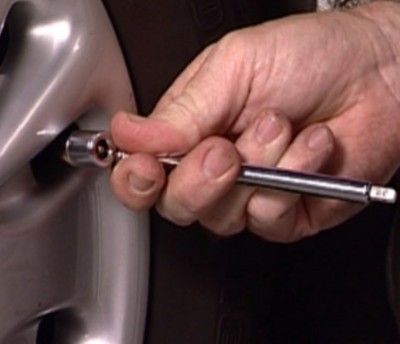 com/watch?v=KNL7Ahg8zSs
com/watch?v=KNL7Ahg8zSs
There are 3 car compressor power schemes. For small and low-power models, power supply from the salon "cigarette lighter" is quite enough. Also, a number of manufacturers focusing on the middle price range also offer an adapter for connecting the compressor directly to the battery terminals.
The more powerful members of the segment already require battery power only and come with alligator clip leads as standard. The third group of products are self-contained compressors, which have a built-in lithium-ion battery charged from a household network. As a rule, the supply of electricity in this case is enough for a full pumping of 2-3 wheels.
From the point of view of ease of use, the last option is the most acceptable, which is also the most expensive option. But if you want relatively high performance, then you should not look towards budget models that operate from the on-board network, that is, through the "cigarette lighter".
 By placing the device near the car, you can pump up all four wheels without moving it from its place.
By placing the device near the car, you can pump up all four wheels without moving it from its place. However, it's not worth paying extra for the extra meters of tubing when it comes to a lightweight pump that's easy to carry around. Typically, the length of the hose ranges from 1-10 m
At the same time, pay attention to the length of the supply cable (at least 2.5-3 m). In total, the compressor should allow the farthest wheel to be inflated without problems
 S.
S.  S.
S. | Vitaly Kabyshev, . Photo of manufacturers | |
| A punctured tire is always very annoying. But it is better to know about the flat tire in advance - this is where tire pressure sensors will help. |
The first patent for a tire was obtained in 1846, and since then the wheels have been constantly punctured. It is clear to anyone that a flat tire does not bode well. Yes, and dropped pressure can be very dangerous: it’s not for nothing that in the “Daily Maintenance” section of the car’s operating instructions, the item “Checking tire pressure” is one of the first.
When a tire "breathes", the rolling resistance increases significantly. Where does this lead? To an increase in fuel consumption, increased tire wear and, of course, to the side slip of the car. Moreover, such a small drift to the side can be attributed to the slope of the road or rut. So the driver, by mistake or inexperience, can continue to move for quite some time. And the most dangerous thing about this is that in an emergency, for example, during a sharp maneuver or braking, a flat tire can break off the disc or turn over. And here it is not far from the accident.
Where does this lead? To an increase in fuel consumption, increased tire wear and, of course, to the side slip of the car. Moreover, such a small drift to the side can be attributed to the slope of the road or rut. So the driver, by mistake or inexperience, can continue to move for quite some time. And the most dangerous thing about this is that in an emergency, for example, during a sharp maneuver or braking, a flat tire can break off the disc or turn over. And here it is not far from the accident.
Therefore, this disgrace must be fought with all our might. And the sooner the driver notices the loss of pressure, the better. Of course, the easiest way is to check the pressure before the trip by connecting a pump or pressure gauge to each wheel in turn. But we are lazy and forgetful people. And the pleasure of poking around in the cold or in the rain with some kind of devices is small. Moreover, there is already a whole bunch of systems that can check this very pressure.
China-made caps indicate pressure loss by changing color. Informativeness is good, accuracy is questionable.
Informativeness is good, accuracy is questionable.
The simplest of them are special caps with color indicators, which are installed instead of the standard caps on the boost valves. The pressure dropped below, say, two atmospheres - a warning yellow (orange, purple) strip will appear under the transparent cap of such a miracle cap. Yeah, it's clear that something is wrong with the wheel, we need to check. The pressure has dropped even lower - the cap will “paint” in a different, usually red color, which will indicate the criticality of what is happening. The advantage of this approach is simplicity. Minus - not enough good information content. After all, the caps can only be seen during a stop. Still, getting around the car before the trip, looking at the colors of the caps, is much easier than measuring the pressure every time.
Another disadvantage is that the caps begin to inform about the change in pressure only when it falls below some certain values, which, by the way, can be quite normal for your car and your wheels.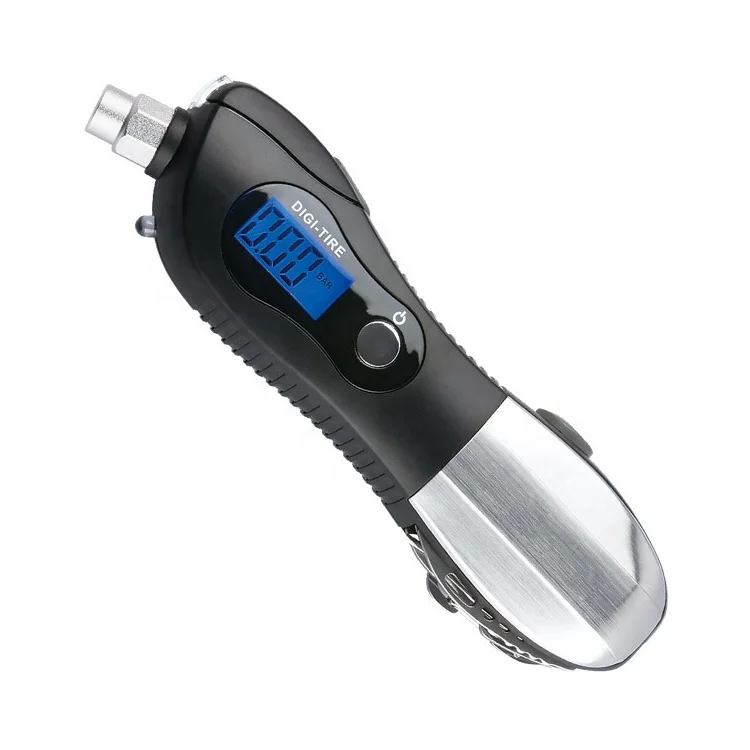 So, you need to select them exactly for your car.
So, you need to select them exactly for your car.
The radio sensors of many electronic monitoring systems are mounted on the disk using special clamps.
And in order to notice something wrong while driving, it would be nice to have an electronic system on board that would automatically notify you of dangerous pressure drops. And not just notify, but would do it on time (so that there was time to orient) and without false positives.
The installed control system in this case will warn the driver at the right time about a change in the corresponding parameter and give him enough time to stop the car safely. It is clear that in cases of a serious puncture or explosion of a tire, such systems will not help, since the driver will feel the car pull without any sensors. But with a “slow” puncture, such electronics are simply irreplaceable.
There are, for example, systems that transmit tire pressure and temperature data to the central unit via radio. And there are those who can transmit this data via Bluetooth to phones or communicators. Well, it's very convenient.
Well, it's very convenient.
X-Pressure pressure monitoring system developed by Pirelli. In the simplest version of Optic, it consists of four caps that are installed on regular valves. And they signal a drop in pressure by a change in color.
But there are more tricky systems that work without "real" pressure sensors, but through ABS. It is they who are usually put in the standard configuration of cars. How do they work?
Electronics with the help of sensors determines the speed of the wheels and their relative difference at each moment of time. As you know, when the pressure drops, the height of the tire profile becomes lower. Consequently, the speed of rotation of the wheel with the "sick" tire increases, therefore, the difference in the frequencies of rotation of the wheels on the same axle also increases. As a result, the system captures these changes - and gives an alarm signal.
Acoustic X-Pressure system. Sensors are built into the caps that register pressure, and radio transmitters that provide communication with the central unit.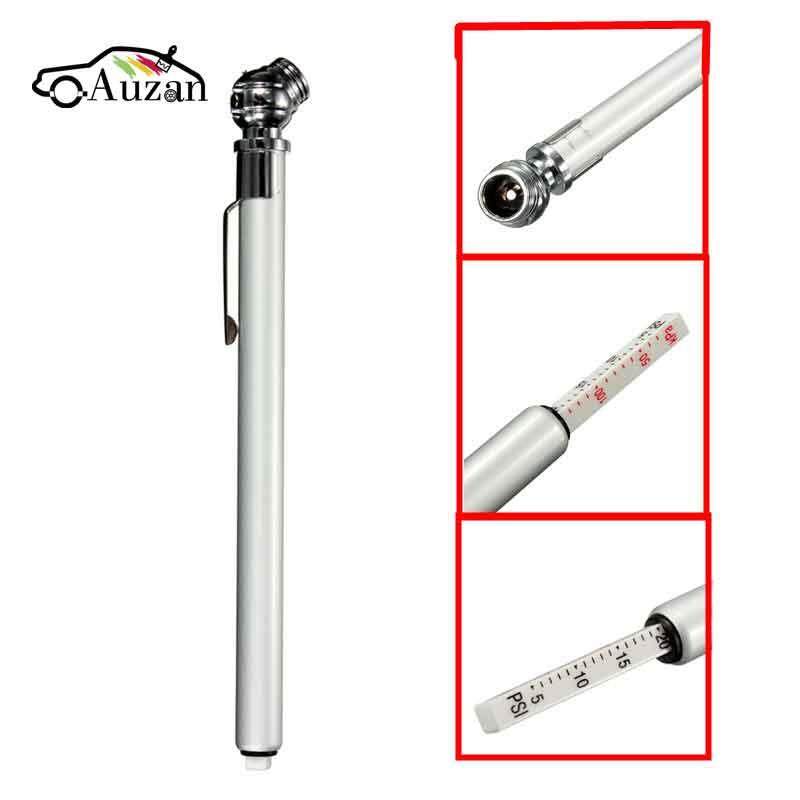 As soon as the pressure has dropped, a corresponding indication appears on the display of this unit and a warning sound signal is heard. Batteries in caps are enough for about 5 thousand hours of operation, which corresponds to five years of operation. Replacement of batteries in the caps is not provided, therefore, at the end of the service life, the set must be changed completely.
As soon as the pressure has dropped, a corresponding indication appears on the display of this unit and a warning sound signal is heard. Batteries in caps are enough for about 5 thousand hours of operation, which corresponds to five years of operation. Replacement of batteries in the caps is not provided, therefore, at the end of the service life, the set must be changed completely.
Why is this indirect method of determining tire pressure bad? Such systems can work, for example, in long turns, when for a relatively long time the system detects a large difference in the rotational speeds of the wheels of different sides (after all, the outer wheels spin at a higher speed than the inner ones). And these are flowers.
One of the more sophisticated X-Pressures, AcousticBlue can transmit pressure data via Bluetooth to a mobile phone. There is such a thing from 160 euros.
In some cases, such systems are useless at all. For example, when tires with run-flat technology are installed on a car.